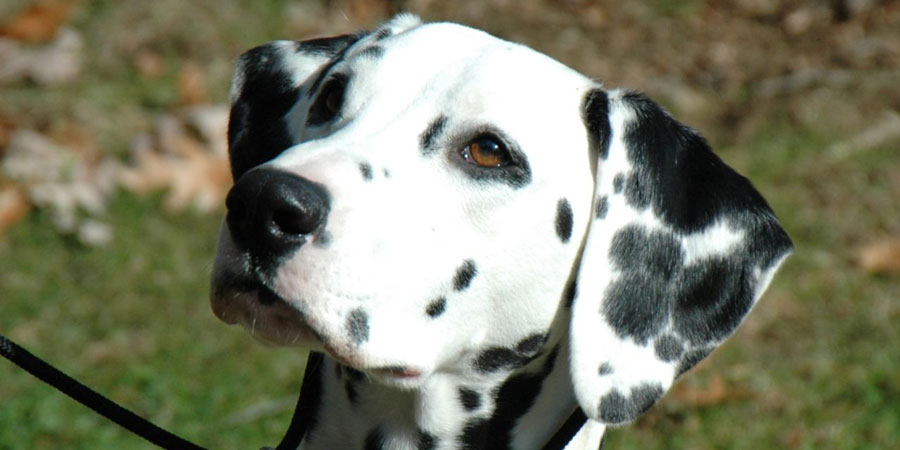

Dal, Dally, Carriage Dog, Spotted Coach Dog, Firehouse Dog, Plum Pudding Dog
Overview
The Dalmatian is a square-proportioned, athletic dog of good substance and sturdy bone. It is built for efficiency at the trot and great endurance, and its movement should be steady and effortless. The expression is alert and intelligent; the coat short and sleek. The distinctive spots are an essential point of type; solid patches (distinguished from masses of spots by the patch's sharply defined, smooth edges) are a disqualification.
The Dalmatian makes a good playmate for children, although it may be a little too rambunctious for smaller children. Dalmatians get along well with other dogs or household pets, though it is should be socialized as a puppy if possible. The Dalmatian is naturally fond of humans and horses. The Dalmatian can be watchful around strangers.
| Size | Large |
| Height | Male: 22 - 24 inches (50 – 60 cm)Female: 20 - 22 inches (50 - 55 cm) |
| Weight | about 55 pounds (25 kg) |
| Lifespan | 12-14 years |
| Colors | White & Black White & Liver Brown |
| Origin | United Kingdom Croatia |
| Classification | Purebred |
| Good Lapcat |
| Good In Apartments |
A Dalmatian is not an ideal dog for apartment dwellers unless it can be taken out for a brisk walk or run several times a day. They are very active indoors and will do best with at least an average-sized yard. Not suited to living outside in cold climates. |
| Good With Children |
Good with Kids: This is a suitable breed for kids and is known to be playful, energetic, and affectionate around them. |
| Good With Dogs |
|
| Good With Cats |
|
| Exercise Needs |
This is a very energetic dog with enormous stamina. They need to be taken on daily, long, brisk walks or jogs where the dog is made to heel beside or behind the human holding the lead. Never in front, as instinct tells a dog that the leader leads the way, and that leader needs to be the human. In addition, it needs plenty of opportunity to run, preferably off the leash in a safe area. If these dogs are allowed to get bored, and are not walked or jogged daily, they can become destructive and start to display a wide array of behavioral problems. They love to run! |
| Trainability |
Moderately Easy Training: The Dalmatian requires consistent training. Dalmatians respond positively to praise when they have done something well. Dalmatians are very sensitive with long memories—they will remember mistreatment and should not be trained roughly. Harsh methods are unlikely to succeed and consistent, gentle corrections are recommended. The Dalmatian has a strong sense of rank and is highly strong willed, so an experienced trainer is recommended. |
| Affectionate |
|
| Playfulness |
|
| Grooming Requirements |
Low Maintenance: On the plus side, the Dalmatian’s short, fine, velvety-smooth coat is easy to groom. Brush it several times a week with a bristle brush, rubber curry brush, hound mitt, or pumice stone to strip out the dead hair and keep the coat gleaming. |
| Shedding |
Constant Shedding: Expect this dog to shed frequently. Be prepared to vacuum often. Brushing will reduce shedding as well as make the coat softer and cleaner. |
| Vocalization/Barking |
Occassional |